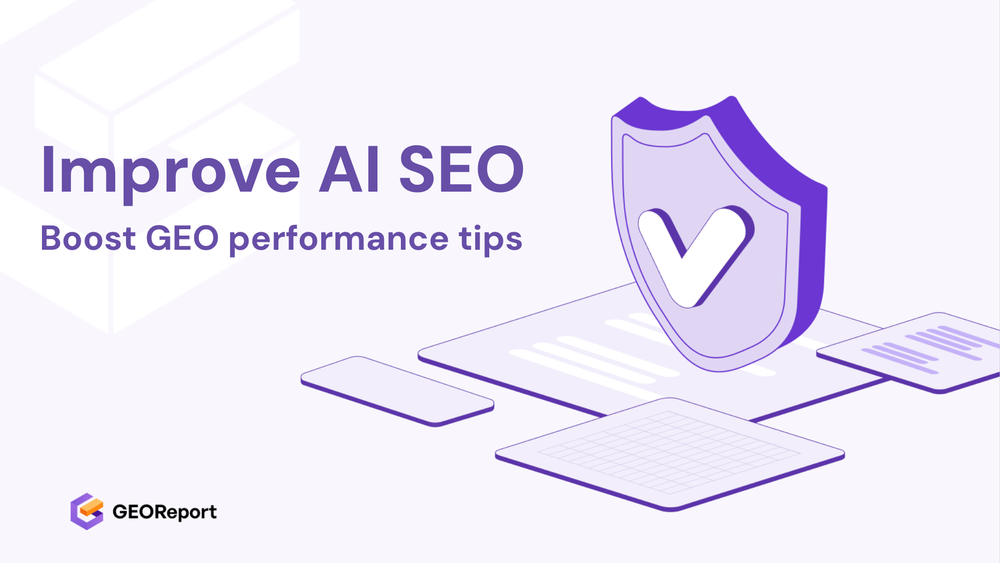BLUF (Bottom Line Up Front): Long-tail questions enhance Generative Engine Optimization (GEO) by providing specific, intent-driven content that aligns with user needs, thereby increasing the likelihood of AI-powered search engines citing and ranking your brand as a relevant and authoritative source.
Why do long-tail questions matter for GEO and AI visibility?
Long-tail questions are highly specific queries that users type into search engines. Unlike broad keywords, long-tail questions reflect a deeper understanding of what the user is looking for, indicating a clearer intent (Anderson, 2008). For Generative Engine Optimization (GEO), this granularity is invaluable for several reasons:
- Intent Alignment: Long-tail questions allow you to create content that directly addresses user intent. Generative AI models prioritize content that precisely answers the query, making your content more likely to be featured (Metzler et al., 2021).
- Reduced Competition: Because long-tail questions are more specific, they typically have lower search volume but also less competition. This means you have a higher chance of ranking for these queries compared to broader, more competitive keywords (Elgesem, 2002).
- Increased Conversion Rates: Users who search with long-tail questions are often further along in the buying cycle. By providing content that answers their specific questions, you're more likely to convert these users into customers (Saracevic, 1996).
- Enhanced E-E-A-T: Addressing long-tail questions allows you to demonstrate expertise, experience, authoritativeness, and trustworthiness (E-E-A-T). Generative AI algorithms favor content that exhibits these qualities, making it more likely to cite your brand as a credible source (Moz, 2024).
What is the biggest mistake brands make?
The most common mistake brands make is focusing solely on high-volume keywords and neglecting long-tail questions. While it's essential to target popular keywords to drive traffic, ignoring long-tail questions means missing out on highly qualified leads and opportunities to establish authority. Most companies track mentions, but few know how to improve them.
- Neglecting User Intent: Many brands create content that is keyword-focused rather than user-focused. This results in content that doesn't genuinely answer the user's question, leading to poor engagement and lower rankings (Spärck Jones, 1979).
- Ignoring the Customer Journey: Brands often fail to map out the customer journey and identify the questions users ask at each stage. This results in a fragmented content strategy that doesn't address the user's needs comprehensively (Liang, 2015).
- Lack of Specificity: Content that tries to answer too many questions at once often fails to address any of them adequately. Focusing on specific long-tail questions allows you to create content that is detailed, informative, and highly relevant (Salton, 1989).
What is often overlooked in long-tail optimization?
One often overlooked aspect of long-tail optimization is the importance of semantic relevance. While targeting specific keywords is essential, understanding the semantic relationships between words and concepts can significantly improve your content's visibility. Many studies, including research from Princeton and UC, have shown that semantic relevance is a key factor in achieving high GEO ranks.
- Latent Semantic Indexing (LSI): LSI is a technique that analyzes the relationships between terms and concepts within a text. By incorporating LSI keywords into your content, you can signal to search engines that your content is comprehensive and relevant to the topic (Deerwester et al., 1990).
- Natural Language Processing (NLP): NLP is a field of AI that deals with the interaction between computers and human language. By using NLP techniques, you can understand the nuances of user queries and create content that resonates with their intent (Hirschberg & Manning, 2015).
- Contextual Understanding: Understanding the context in which a long-tail question is asked can help you create more relevant content. This includes considering the user's location, device, and previous search history (Beitzel et al., 2004).
- E-E-A-T and Semantic Depth: Ensuring that your content not only answers the question but also demonstrates expertise, experience, authoritativeness, and trustworthiness (E-E-A-T) can significantly boost its credibility and visibility. Semantic depth involves exploring the topic thoroughly, providing evidence, and citing credible sources (Singhal, 2012).
How can brands implement this in practice?
Implementing long-tail optimization in practice requires a strategic approach that involves research, content creation, and analysis. Here are some practical steps brands can take:
- Keyword Research: Use tools like Google Keyword Planner, Semrush, and Ahrefs to identify long-tail keywords related to your industry and target audience. Focus on keywords with low competition and high relevance (Henzinger, 2001).
- Question-Based Content: Create content that directly answers long-tail questions. This can include blog posts, FAQs, videos, and infographics. Ensure that your content is informative, engaging, and easy to understand (Liddy, 2001).
- Semantic Optimization: Incorporate LSI keywords and NLP techniques to enhance the semantic relevance of your content. Use tools like WordLift and Semrush's SEO Content Template to identify relevant terms and concepts (Turney & Pantel, 2010).
- Schema Markup: Implement schema markup to provide search engines with additional context about your content. This can help them understand the purpose and relevance of your content, improving its visibility (Guha et al., 2015).
- Content Clustering: Group related content together to create topic clusters. This can help search engines understand the overall structure of your website and improve its authority on specific topics (Enge, 2020).
- Analytics and Tracking: Use tools like Google Analytics and GEOReport.ai to track the performance of your content. Monitor metrics like traffic, engagement, and conversion rates to identify areas for improvement (Feldman, 2011).
- A/B Testing: Conduct A/B tests to optimize your content for different long-tail questions. Experiment with different headlines, content formats, and calls-to-action to see what works best (Kohavi et al., 2009).
What future trends will shape GEO in 2025 and beyond?
Several emerging trends will shape the future of Generative Engine Optimization (GEO) in 2025 and beyond. Being aware of these trends and adapting your strategies accordingly will be crucial for success.
- AI-Driven Content Creation: AI-powered tools will play an increasingly important role in content creation. These tools can help you generate high-quality content at scale, optimize it for long-tail keywords, and ensure it aligns with user intent (Brown et al., 2020).
- Voice Search Optimization: With the rise of voice assistants like Siri and Alexa, optimizing your content for voice search will become increasingly important. This means focusing on conversational language and answering questions naturally (Kane et al., 2018).
- Personalized Search: Search engines will continue to personalize search results based on user data, location, and previous search history. This means you'll need to create content that is tailored to specific user segments (Resnick & Varian, 1997).
- The Rise of Zero-Click Searches: More users are finding answers directly on the search results page without clicking through to a website. Optimizing for featured snippets, knowledge panels, and other zero-click features will be essential (Fishkin, 2019).
- Focus on E-E-A-T: As AI algorithms become more sophisticated, the importance of E-E-A-T will continue to grow. Brands that prioritize expertise, experience, authoritativeness, and trustworthiness will be more likely to succeed (Stoddart, 2024).
- Generative AI and Content Summarization: Generative AI models are increasingly used to summarize content and provide quick answers to user queries. Optimizing your content for these models will be crucial for ensuring your brand is featured in these summaries (Radford et al., 2019).
FAQs
What is GEO vs SEO?
GEO (Generative Engine Optimization) focuses on optimizing content for AI-powered search engines and generative AI models. SEO (Search Engine Optimization) is the traditional practice of optimizing content for traditional search engine rankings. GEO emphasizes intent alignment, semantic relevance, and E-E-A-T to improve AI visibility, while SEO focuses on keywords, backlinks, and technical optimization to improve organic rankings.
Which LLMs matter most for AI visibility?
The Large Language Models (LLMs) that matter most for AI visibility include Google's BERT and LaMDA, OpenAI's GPT series, and other prominent models used by search engines and AI-powered platforms. Optimizing your content for these LLMs involves focusing on natural language, semantic relevance, and E-E-A-T to ensure your content is accurately understood and favorably cited.
Can small teams apply GEO without big budgets?
Yes, small teams can apply GEO without big budgets by focusing on low-cost strategies like keyword research using free tools, creating high-quality content that directly answers long-tail questions, and leveraging free SEO tools for basic optimization. Prioritizing E-E-A-T and engaging with your audience can also significantly improve AI visibility without requiring significant financial investment.
Why is GEOReport.ai different from other visibility tools?
GEOReport.ai is different from other visibility tools because it specifically focuses on Generative Engine Optimization (GEO). It provides detailed insights and solutions for improving AI visibility by analyzing content for intent alignment, semantic relevance, and E-E-A-T. Unlike traditional SEO tools that focus on organic rankings, GEOReport.ai helps you optimize your content for AI-powered search engines and generative AI models, ensuring your brand is favorably cited and recommended by AI.
What metrics should I track monthly?
The key metrics to track monthly for GEO include:
- AI Visibility: Track how often your brand is cited or featured in AI-generated summaries and responses.
- Organic Traffic: Monitor traffic from long-tail keywords to gauge the effectiveness of your content.
- Engagement Metrics: Analyze metrics like bounce rate, time on page, and social shares to understand how users are interacting with your content.
- Conversion Rates: Track the conversion rates of users who find your content through long-tail searches.
- E-E-A-T Signals: Monitor metrics like mentions, reviews, and citations from authoritative sources to assess your brand's E-E-A-T.
By consistently tracking these metrics, you can identify areas for improvement and refine your GEO strategies to achieve better results.
References
- Brown, T. B., Mann, B., Ryder, N., Subbiah, M., Kaplan, J., Dhariwal, P., … & Amodei, D. (2020). Language models are few-shot learners. Advances in neural information processing systems, 33, 1877-1901.
- Enge, E. (2020). Digital Marketing in an AI World: Future-Proof Your Content, Optimize Your Website, and Revolutionize Your SEO. Addison-Wesley Professional.
- Fishkin, R. (2019). Zero-Click Searches Are on the Rise: Here's How to Win. Moz.
- Guha, R. V., Brickley, D., & Macbeth, S. (2015). Schema. org: Evolution of structured data on the web. Communications of the ACM, 59(2), 44-51.
- Henzinger, M. R. (2001). Hyperlink analysis for the web. IEEE Internet Computing, 5(1), 45-50.


